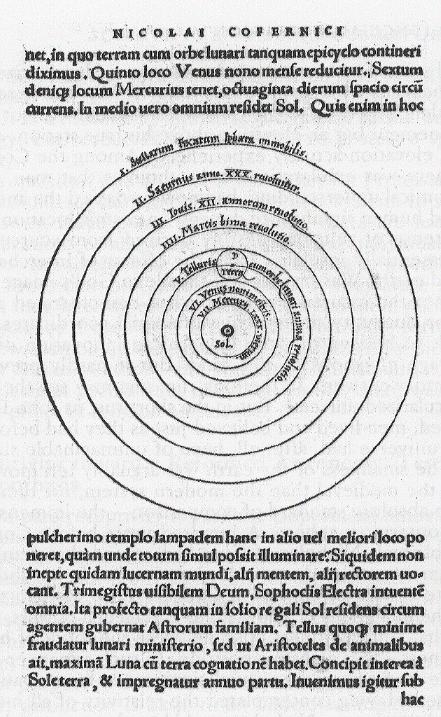

A diagram that shook the world, in chapter 10 of Book I of Copernicus' On the Revolutions (De revolutionibus orbium coelestium). In the Copernican system the Earth is given three distinct motions: a daily axial rotation, an annual rotation about the Sun, and a third motion related to precession. As acknowledged by Copernicus himself in the introduction of his book, the heliocentric hypothesis goes back to antiquity, in fact with Aristarchus of Samos (ca. 310-230 BC); In De Revolutionibus Copernicus mentions Philolaus, in reference to the Pythagorean school in general), and the hypothesis of the Earth's axial rotation at least to Heraklides of Pontus (ca. 388-310 BC).
The Copernican model has two observational consequences that were not observed at the time, which greatly bothered Copernicus. First, because of the Earths motion about the Sun, the stars should show an annual parallax; in fact they do, but the distance to the stars is so much larger than believed in Copernicus' days that the effect is only detectable telescopically. Second, because Mercury and Venus orbit the Sun they should show phases similar to the Moon's. Again they do, but observational confirmation of this had to await Galileo and the telescope.
Contrary to a common opinion still perpetuated today in some introductory astronomy textbooks, Copernicus did not eliminate Ptolemy's epicycles from planetary theory; he did eliminate the primary epicycles used to reproduce the apparent retrograde motions of the upper planets, but in fact his mathematical model of planetary motion contains about as many epicycles as the version of the ptolemaic model in use at the time. More importantly, Copernicus eliminated the equant, so that his model involved only perfectly regular circular motions. As a consequence his model was not particularly more accurate than Ptolemy's at predicting planetary positions. It was Kepler who brought the heliocentric system to its modern form.
Copernicus, N., On the Revolutions, edited and translated by E. Rosen, The Johns Hopkins University Press, 1992.Kuhn, T.S. 1957, The Copernican Revolution, Harvard University Press.
Gingerich, O. 1993, The Eye of Heaven, American Institute of Physics.
-Written and last revised 29 December 1997 by paulchar@ucar.edu.